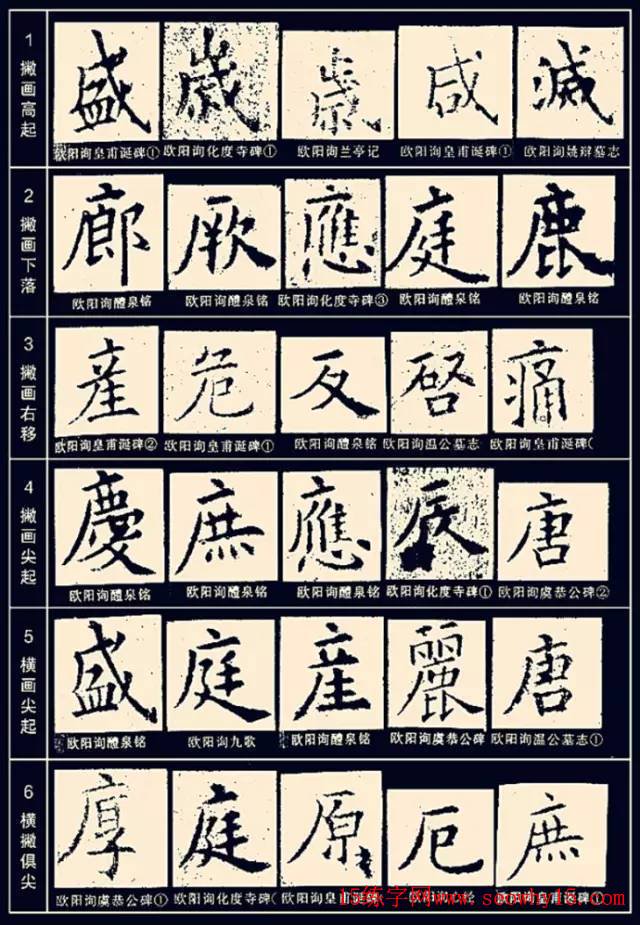The great thing about Ouyang Xun's regular script is that Ouyang Xun has countless ways of writing each stroke.
Today we will take an example, such as the word "factory". The word "factory" is one of the main parts of Chinese characters in regular script. Although there are only two paintings, it is very difficult to write well. The main reason is that the horizontal stroke and the stroke stroke should start from the same position. That is, after the horizontal stroke is finished, the starting stroke of the horizontal stroke should start from the same position as the horizontal stroke. If the starting points of two strokes (especially the starting strokes that require both horizontal and vertical strokes) overlap at the same position, the double amount of water will inevitably cause a large bleed and become an ink ball.
For this situation, Ouyang Xun already had a countermeasure: when two strokes are connected, the second stroke will no longer start, and the stroke will be written directly, so that the two strokes share a starting point, thus avoiding the generation of ink balls. It should be said that this is a very scientific and very effective method, and all scholars in ancient and modern times have followed it. However, its shortcoming is that the strokes that omit the starting stroke are not as independent and perfect as the strokes that have the starting stroke.

In addition to omitting the starting stroke in the second stroke, is there any other way to avoid repeating the starting stroke with horizontal strokes and strokes?
When I analyzed the arrangement of all the Chinese characters in Ouyang Xun's books such as "factory", "guang", and "ma", I found that Ouyang Xun had 6 different treatments for them. They are: draw up, draw down, draw right, draw sharply, draw horizontally, draw sharply, and draw horizontally sharply.
The first three methods are all based on moving the position of the stroke to avoid the overlap of the horizontal stroke and the stroke stroke; the latter three methods are to change the stroke stroke of the stroke to "point stroke", and the "point stroke" stroke stroke is equal to no stroke stroke. This method of using small changes in strokes to resolve repeated strokes fully reflects the skill and skill of the ancient master Ouyang Xun.
From this, we clearly see Ouyang Xun’s three methods of dealing with horizontal and vertical connections:
1. Stroke separation (cross strokes and stroke strokes are separated and moved away from each other);
2. Stroke shifting (changing the respective positions of horizontal and oblique strokes so that they cannot overlap);
3. Confront reality with imaginary (added "pointed rise" to counter "sudden rise").
In addition, the tip of "jianqi" is like the leaves of orchid grass, so it is called "orchid leaf". It started with cursive calligraphy and painting. Ouyang Xun boldly "introduced" it and successfully regularized it, becoming the representative strokes of European style. This also reflects from one side that subtle changes have great effects; in just small things, you can better appreciate the beauty of the master.








